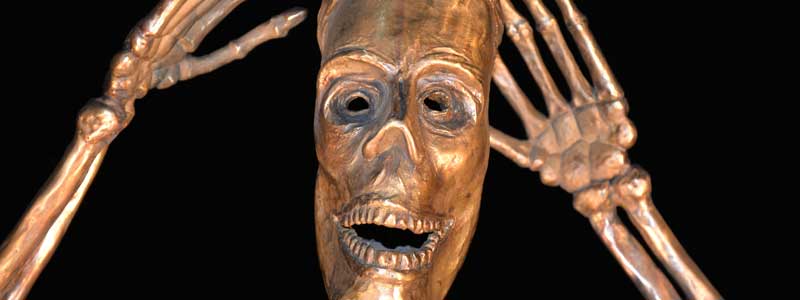

CATRINA
Nicholas Swearer encountered the Catrina image on his many trips to Mexico and was intrigued with its association of the enjoyment of life in the face of the inevitability of death.
Catrina first appeared in 1913 used as social satire in an etching of a skull in a fancy hat by JoséGuadalupe Posada. His criticism was aimed at the upper class Mexican natives attempting to imitate European aristocratic traditions and the underlying pretentions toward self-importance. His etching is to say "we are all the same in death."
Mexican artist Diego Riveria incorporated a Catrina in his mural "Dream of a Sunday in Alameda Park" helping to cement the Catrina as an icon of Mexican art. Catrina is now strongly associated with "Day of the Dead" and has many apparitions from simple to elaborate.
Swearer found creating a Catrina to be a very interesting creative process. It was an exploration of the beauty of life in the embodiment of death. His "Catrina" portrays a simple elegance with energy that surprises both us and death herself, as if to say "savor this very moment."
"Catrina" is life sized in cast bronze and one of a kind. She was originally created using a pinched wax method with no armature which allowed for maximum exploration during her creation. She went through many states to become who she is today.



